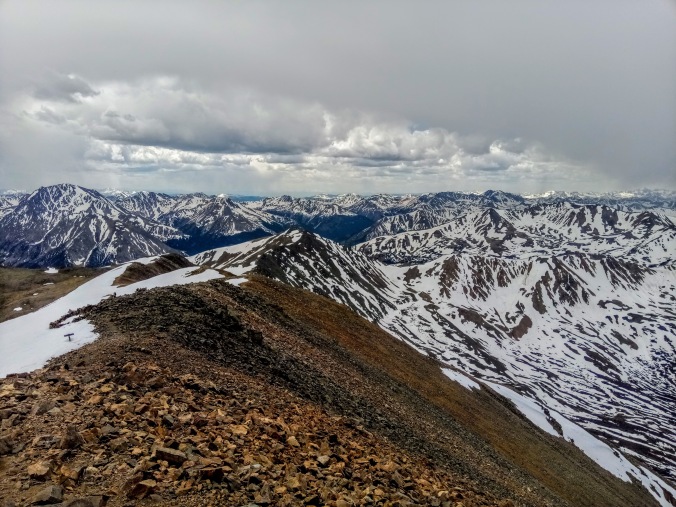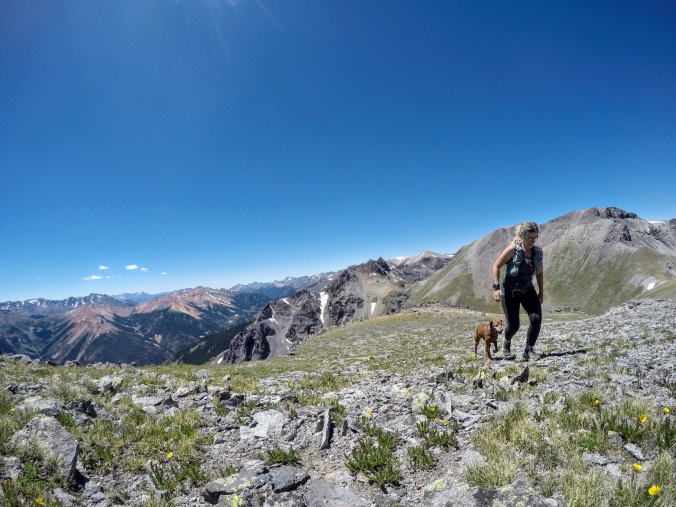“The winner is never determined by better muscle tone or better shoes. No, the winner is determined by what’s in the heart and what’s in the soul.” BULL SHIT. I’m doing this file for work and this random guy says that about when Usain Bolt won the 100 meter in the London Olympics in 2012 and typing that out just pushed me right over the edge.
You win races by being perfectly trained, I don’t know much but I know that. Leading with your heart is how you end up overtrained and 10 months out, here I am, lying around because I rode my bike twice this week and I’m too tired to do anything else. And honestly, as far as I’ve come mentally being more positive and accepting the situation and my body and trying to take better care of my self and the hundreds of hours I’ve spent trying to better understand physiology (because I have come SUCH A LONG WAY), some days it still feels like garbage because the only thing I want to do is train.
It is not work ethic that’s keeping me in bed. It’s not heart. When my legs are still fatigued and my heart rate is still elevated, like it is right now, if I try to go for an easy jog I’ll start to feel dizzy and get these weird heart rate rushes that I don’t totally understand but I’m fairly sure it has something to do with my adrenal system failing to regulate cortisol. And the only thing I can do is fully rest until the fatigue passes and my heart rate goes back down. I don’t recommend using this time to find out exactly how bad the Atlas Shrugged movies are. They are so bad.

Mostly pictures from July & August ’19, when I had OTS and didn’t know it yet. Tetons! I didn’t climb a lot of mountains on this Tetons trip because I was so tired
Don’t fucking tell me that what a great athlete has is heart. What they actually have is a coach that organized and scheduled their training and recovery carefully to maximize gains without pushing their muscles and cardiovascular system and eventually their nervous system too hard and thus causing it to unravel. And there’s my rant. Don’t worry, I am angry sometimes still but I’ve done so much to learn about why this happened and find good things that have come out of this, too.

Did a lot of biking to get Pips out
One of my big complaints during this process is that nobody talks about it. It’s so hard to find useful information. (It is so validating when you do though, like when I found this old article https://www.outsideonline.com/1986361/running-empty), or when I was listening to that recovery book Good to Go on audiobook and they talked very briefly about Ryan Hall and his coach and the stages of recovery. I had previously found the most info about the complete rest stage, and that you’ll know when you’re ready to come back. But six months into recovery, I was still really struggling as I tried to ramp up my mileage because I didn’t yet know that for the next six months or so I could train but I’d have to restrict volume by a lot. That was also the first time I heard that the one year mark is the typical time frame for a full parasympathetic OTS recovery.

Me and Pips on Missouri in August last year
Anyway, but then, as numerous people have pointed out to me, I haven’t written about it either. And I’ve really tried. I’ve written about it in multiple stages then not shared them with anyone. I actually think it was a big step when I started alluding to the fact I had OTS on Strava. I guess I kept thinking that one day, I would have this big turnaround. One of the posts I wrote and never published, I re-read it and realized that it’s so overwhelmingly negative still, and I thought, I have to wait until it’s all positive. But it’s not all positive and it probably never will be! It’s good and bad, like everything else. But I just had this thought today, if I write about it, even when it’s not pretty or funny or inspiring yet, I’m doing my part to change the lack of information and stigma about OTS. I think about what a relief it was when I was able to dig up each small piece of information I’ve even been able to find. More information is better.

Elbert
July 4th was the one year anniversary of when I’m sure I had OTS (although I wouldn’t figure it out until September). I can remember feeling good after Broken Arrow in late June, I ran a good time (6:28) but wished I could’ve placed better (14), and thinking all I had to do was work my ass off for a couple weeks until I tapered for Speedgoat. I drove straight through to Leadville and jumped back into big days of mountain runs immediately, pushing hard. I was doing 4,300-8,000 feet in 9 to 20 miles every day that first week and feeling worse and worse by the moment, until I could barely stagger into the coffee shop and complain “I am so exhausted. The altitude is killing me.”
Because just like every other runner who’s had OTS, I was already in the spiral and every day I didn’t perform the way I wanted, I had to push harder the next day. And I had no concept of OTS. My friend responded to my plight, “Don’t you think you’re overdoing it?” Gosh I think my dad said it, too, and he didn’t even see me. But I couldn’t have understood what overdoing it meant at that point. Because people who have a lot of heart believe that whoever works the hardest is the best.
So I kept pushing and pushing. I do think the high altitude was a factor, it’s a big physical stressor on your body and on your nervous system, I understand how all that works much better now. Steve House says in Training for the New Alpinism to rate your workouts A-D to prevent OTS (he also says to prevent it at all costs, because OTS will make you lose everything, which was how I felt for a long time). A if you felt great, B if you felt good but not great, C for you felt bad, and D if you had to stop the workout early because you couldn’t physically complete it. Every workout was a D. With the combination of all the things, I was literally running myself into the ground.

Got tired of cycling photos back a year, this is recently on our way to Hayden
To top it off, on July 4th, despite feeling constantly exhausted and just having done an 85 mile week with 30,000’ of climbing, I got up in the morning and left for the Hope Epic Zombie Loop (the one thing that wasn’t highly physically and mentally stressful about that was the Cranberries song). I can’t say for sure that it wasn’t too late before the Zombie loop, that maybe I could’ve recovered if I had caught it then, but looking back, that was the straw that broke the camel’s back (or the heinous 50 mile high altitude loop that broke my nervous system). From then on, I would feel exhausted every day until at least mid November and often after that, no matter how much I rested, and I did start complete rest in September.

The map before my watch died of the Zombie loop
I raced two more times and kept running despite feeing bad and having 0 motivation (depression and loss of motivation are also symptoms), but even taking more and more recovery, I was feeling worse and worse and worse and I knew something was wrong. In September I finally thought to start monitoring my heart rate. I put a hard effort on Hope Pass and my HR went over 200. I left the chest strap on and monitored my heart rate 24 hours a day for the next few days and realized that my HR rarely went below 90, even first thing in the morning. This is the key to catching OTS that I figured out too late, if you monitor your heart rate even fairly regularly, you will see that it’s not going down and know that you need to rest. I can’t emphasize that enough, check your heart rate!!! You can take 30 seconds to check your heart rate.
One of the best things I’ve learned from all this is how integral your nervous system is to literally everything you do. On our bike ride yesterday, Ang was telling me about how your brain uses sensory cues to start the digestion process. And I added some stuff I’ve learned about the Central Governor theory, about how your brain decides how much anaerobic capacity you can use and how many muscle fibers you can recruit based on all sorts of factors, like how much longer you have to go and how important it is to you. Totally fascinating stuff. Actually, just in typing this I’m realizing that I was not ever going to write one perfect post that sums up my whole OTS experience, because it’s so much bigger than that. I needed to jump, and now I can begin the process of sorting through all the amazing things that have happened and that I’ve learned since then.

Me on Engineer taken by my sister
Here’s a few more things I did find to read that helped me a lot:
Geoff Roes’ perspective: https://www.irunfar.com/2013/04/one-story-of-overtraining.html
Scientific Info from studies done by NIH:
https://www.ncbi.nlm.nih.gov/pmc/articles/PMC3435910/
https://www.ncbi.nlm.nih.gov/pmc/articles/PMC5019445/
https://pubmed.ncbi.nlm.nih.gov/23667795/
An easier to follow scientific breakdown of OTS: